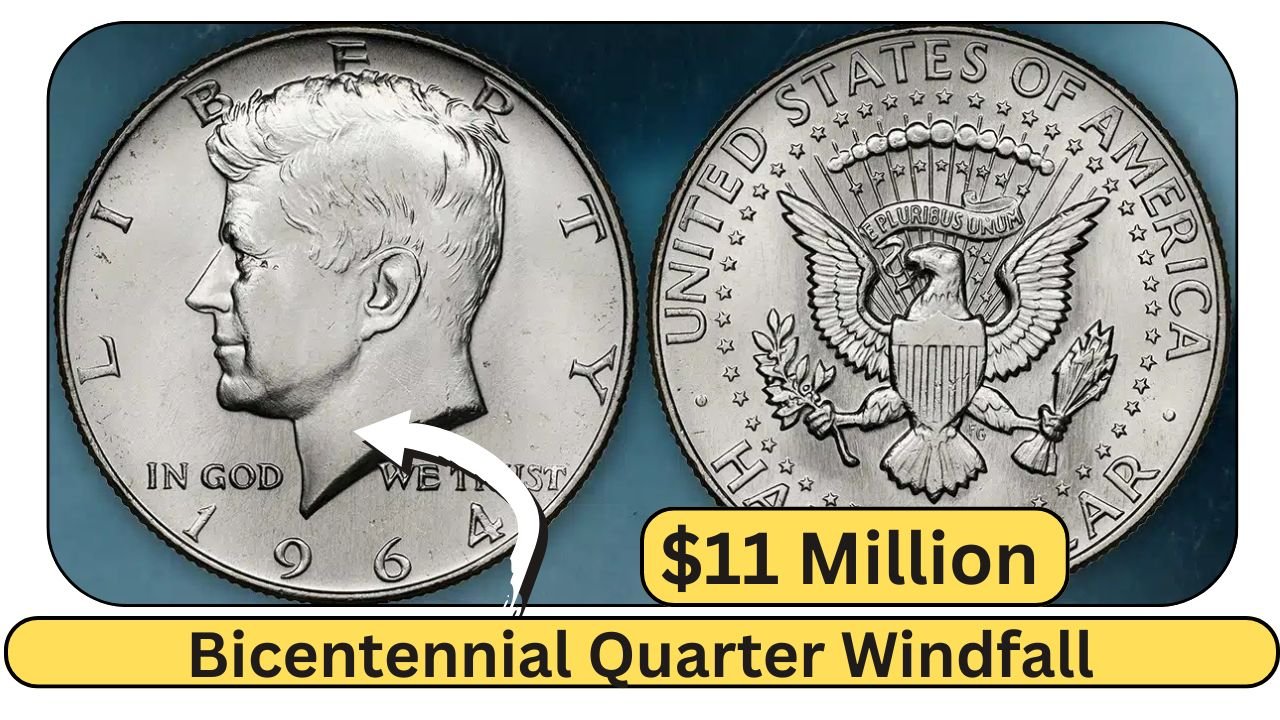Imagine pulling a quarter from your pocket worth $11 million! The 1976 Bicentennial Quarter, made to celebrate America’s 200th birthday, is fueling a treasure hunt in 2025 as collectors search for rare versions still in circulation. With George Washington on the front and a colonial drummer on the back, over 1.6 billion were minted, but a few with errors or special metals are worth big money. X posts are buzzing about a rumored $11 million sale, though experts say it’s unverified. Still, one sold for $19,200 in 2019! Let’s explore the most valuable 1976 quarters and how to spot a fortune in your change.
A Coin Packed with History
The Bicentennial Quarter was minted in 1975 and 1976 to mark 200 years since the Declaration of Independence. It shows “1776-1976” on the front and a drummer boy with 13 stars on the back, designed by Jack L. Ahr. Made in Philadelphia (no mint mark), Denver (D), and San Francisco (S), most are copper-nickel, but some San Francisco coins are 40% silver. While common ones are worth 25 cents, rare errors like double strikes or silver proofs can fetch thousands. The $11 million claim likely comes from a hyped-up error coin, but no auction confirms this yet.
What Makes These Quarters So Valuable?
The $11 million price tag is likely a myth, with no record of such a sale. Experts at PCGS say top Bicentennial Quarters reach $19,200, like a 1976-S silver proof graded PR70. Rare errors boost value: a 1976-D double die obverse, with blurry “LIBERTY” or date, sold for $8,400 in 2023. Quarters struck on dime planchets (smaller, thinner) can hit $9,200. No-mint-mark coins in perfect condition (MS70) are also prized, potentially worth thousands. Condition matters—shiny, uncirculated coins are the most valuable.
Top Valuable 1976 Quarters to Find
Here’s what to look for in your change:
- 1976-S Silver Proof: Shiny, 40% silver, worth $5–$19,200.
- 1976-D Double Die: Blurry text or date, up to $8,400.
- Struck on Dime Planchet: Smaller size, worth $1,000–$9,200.
- No Mint Mark MS70: Perfect condition, rumored up to $2.8 million (unverified).
| Feature | Common 1976 Quarter | Rare 1976 Quarter |
|---|---|---|
| Material | Copper-nickel clad | 40% silver or error metal |
| Mint Mark | None, D, or S | S or none (rare errors) |
| Condition | Circulated | MS68+ or PR70 |
| Value | $0.25–$1 | $1,000–$19,200+ |
Where to Find These Hidden Treasures
Bicentennial Quarters are still out there—in change from stores, vending machines, or old piggy banks. A 2025 X post shared a $6,000 error quarter found in a coffee shop’s tip jar! Many were saved as souvenirs, so check family coin jars, flea markets, or bank rolls. Silver quarters from San Francisco, meant for collector sets, sometimes slipped into circulation. With 1.6 billion minted, your odds of finding a rare one are slim but real, especially for double dies or silver coins, making every quarter worth a glance.
What to Do If You Find a Rare Coin
If you spot a quarter with a silver edge, odd size, or blurry text, don’t clean it—cleaning can ruin its value. Store it in a plastic coin sleeve to keep it safe. Use a magnifying glass to check for doubled text or mint marks, and weigh it—silver coins are 5.75 grams, copper-nickel 5.67 grams. Compare it to images on trusted sites like PCGS or NGC. Take it to a coin shop or grading service for authentication. If it’s real, auction houses like Heritage Auctions can help you sell. Avoid scams about $11 million coins—stick to usmint.gov or PCGS for facts.
Start Your Coin Hunt Today
The $11 million Bicentennial Quarter claim is likely exaggerated, but real treasures like a $19,200 silver proof or $9,200 error coin prove these quarters can be valuable. As America nears its 250th anniversary in 2026, interest in these coins is soaring. Grab a magnifying glass, check your change for “1776-1976” quarters with “S” marks, silver edges, or errors, and you might find a gem. Coin collecting is a fun way to touch history, and your next quarter could be worth thousands. Don’t toss that change—check it for a life-changing windfall!

